Preventive Triple Gene Therapy Reduces the Negative Consequences of Ischemia-Induced Brain Injury after Modelling Stroke in a Rat
- PMID: 32962079
- PMCID: PMC7558841
- DOI: 10.3390/ijms21186858
Preventive Triple Gene Therapy Reduces the Negative Consequences of Ischemia-Induced Brain Injury after Modelling Stroke in a Rat
Abstract
Currently, the main fundamental and clinical interest for stroke therapy is focused on developing a neuroprotective treatment of a penumbra region within the therapeutic window. The development of treatments for ischemic stroke in at-risk patients is of particular interest. Preventive gene therapy may significantly reduce the negative consequences of ischemia-induced brain injury. In the present study, we suggest the approach of preventive gene therapy for stroke. Adenoviral vectors carrying genes encoding vascular endothelial growth factor (VEGF), glial cell-derived neurotrophic factor (GDNF) and neural cell adhesion molecule (NCAM) or gene engineered umbilical cord blood mononuclear cells (UCB-MC) overexpressing recombinant VEGF, GDNF, and NCAM were intrathecally injected before distal occlusion of the middle cerebral artery in rats. Post-ischemic brain recovery was investigated 21 days after stroke modelling. Morphometric and immunofluorescent analysis revealed a reduction of infarction volume accompanied with a lower number of apoptotic cells and decreased expression of Hsp70 in the peri-infarct region in gene-treated animals. The lower immunopositive areas for astrocytes and microglial cells markers, higher number of oligodendrocytes and increased expression of synaptic proteins suggest the inhibition of astrogliosis, supporting the corresponding myelination and functional recovery of neurons in animals receiving preventive gene therapy. In this study, for the first time, we provide evidence of the beneficial effects of preventive triple gene therapy by an adenoviral- or UCB-MC-mediated intrathecal simultaneous delivery combination of vegf165, gdnf, and ncam1 on the preservation and recovery of the brain in rats with subsequent modelling of stroke.
Keywords: GDNF; NCAM; VEGF; adenoviral vector; human umbilical cord blood mononuclear cells; preventive gene therapy; stroke.
Conflict of interest statement
The authors declare no conflict of interest.
Figures
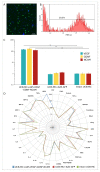
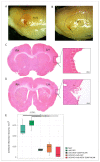
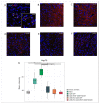
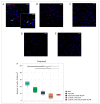


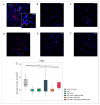
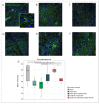



Similar articles
-
A pilot study of cell-mediated gene therapy for spinal cord injury in mini pigs.Neurosci Lett. 2017 Mar 22;644:67-75. doi: 10.1016/j.neulet.2017.02.034. Epub 2017 Feb 14. Neurosci Lett. 2017. PMID: 28213069
-
Evaluation of direct and cell-mediated triple-gene therapy in spinal cord injury in rats.Brain Res Bull. 2017 Jun;132:44-52. doi: 10.1016/j.brainresbull.2017.05.005. Epub 2017 May 18. Brain Res Bull. 2017. PMID: 28529158
-
Epidural Stimulation Combined with Triple Gene Therapy for Spinal Cord Injury Treatment.Int J Mol Sci. 2020 Nov 24;21(23):8896. doi: 10.3390/ijms21238896. Int J Mol Sci. 2020. PMID: 33255323 Free PMC article.
-
Recent Progress in Therapeutic Strategies for Ischemic Stroke.Cell Transplant. 2016;25(5):893-8. doi: 10.3727/096368916X690548. Epub 2016 Jan 18. Cell Transplant. 2016. PMID: 26786838 Review.
-
Glial Cell Line-Derived Neurotrophic Factor and Focal Ischemic Stroke.Neurochem Res. 2021 Oct;46(10):2638-2650. doi: 10.1007/s11064-021-03266-5. Epub 2021 Feb 16. Neurochem Res. 2021. PMID: 33591443 Free PMC article. Review.
Cited by
-
New Insights of Early Brain Injury after Subarachnoid Hemorrhage: A Focus on the Caspase Family.Curr Neuropharmacol. 2023;21(2):392-408. doi: 10.2174/1570159X20666220420115925. Curr Neuropharmacol. 2023. PMID: 35450528 Free PMC article.
-
Evaluation of Direct and Cell-Mediated Lactoferrin Gene Therapy for the Maxillofacial Area Abscesses in Rats.Pharmaceutics. 2021 Jan 4;13(1):58. doi: 10.3390/pharmaceutics13010058. Pharmaceutics. 2021. PMID: 33406760 Free PMC article.
-
Corticospinal tract: a new hope for the treatment of post-stroke spasticity.Acta Neurol Belg. 2024 Feb;124(1):25-36. doi: 10.1007/s13760-023-02377-w. Epub 2023 Sep 13. Acta Neurol Belg. 2024. PMID: 37704780 Free PMC article. Review.
-
Stem Cell Therapy Approaches for Ischemia: Assessing Current Innovations and Future Directions.Int J Mol Sci. 2025 Jun 30;26(13):6320. doi: 10.3390/ijms26136320. Int J Mol Sci. 2025. PMID: 40650096 Free PMC article. Review.
-
Molecular and cellular changes in the post-traumatic spinal cord remodeling after autoinfusion of a genetically-enriched leucoconcentrate in a mini-pig model.Neural Regen Res. 2023 Jul;18(7):1505-1511. doi: 10.4103/1673-5374.360241. Neural Regen Res. 2023. PMID: 36571355 Free PMC article.
References
-
- Karlupia N., Manley N.C., Prasad K., Schäfer R., Steinberg G.K. Intraarterial transplantation of human umbilical cord blood mononuclear cells is more efficacious and safer compared with umbilical cord mesenchymal stromal cells in a rodent stroke model. Stem Cell Res. Ther. 2014;5:45. doi: 10.1186/scrt434. - DOI - PMC - PubMed
MeSH terms
Substances
Grants and funding
LinkOut - more resources
Full Text Sources
Medical
Research Materials
Miscellaneous

